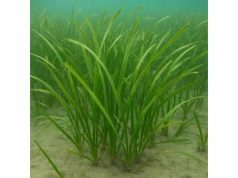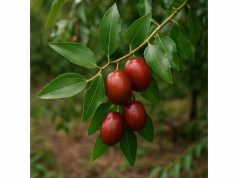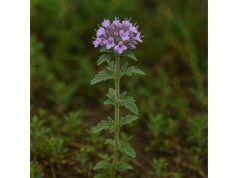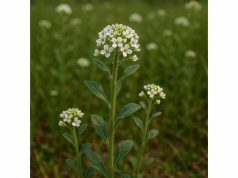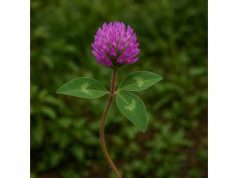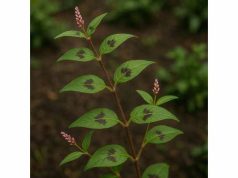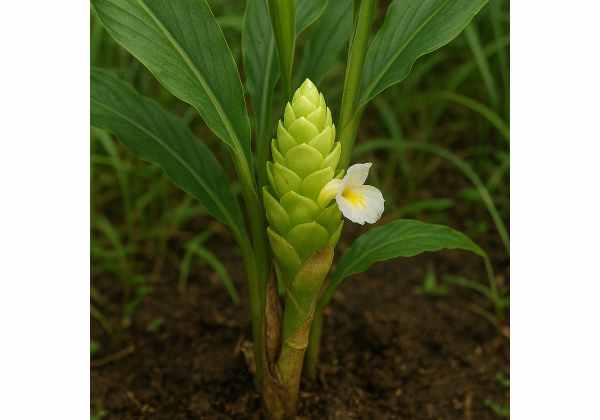
Zingiber, commonly known as ginger, is a globally revered rhizome notable for its robust flavor and profound health-promoting virtues. Packed with bioactive compounds—most famously gingerols, shogaols, and zingerone—this aromatic root delivers potent antioxidant, anti-inflammatory, and digestive-supportive actions. Traditional medicine systems across Asia have long used Zingiber officinale to alleviate nausea, soothe gastrointestinal discomfort, improve circulation, and bolster immunity. Modern research continues to uncover its roles in metabolic health, pain relief, and neuroprotection. In this comprehensive exploration, we’ll delve into ginger’s botanical identity, phytochemical richness, therapeutic strengths, practical applications, safety considerations, and the latest scientific insights confirming its status as a multifunctional medicinal and culinary powerhouse.
Table of Contents
- Botanical Overview and Cultivation
- Chemical Constituents and Active Phytochemicals
- Health Enhancements and Essential Properties
- Applications and Precautionary Notes
- Research Developments and Key Findings
- Frequently Asked Questions
Botanical Overview and Cultivation
Zingiber officinale, a member of the Zingiberaceae family, thrives in tropical and subtropical regions worldwide. This herbaceous perennial features a branching underground rhizome—the edible portion—covered in numerous “fingers” or lateral shoots. Above ground, upright stalks emerge 60–90 cm tall, bearing lanceolate leaves 10–15 cm long with pointed tips and a pseudo-stem formed by overlapping leaf sheaths. In optimal conditions, small tubular yellow-green flowers with purple streaks appear on separate shoots, but most cultivated varieties focus energy on rhizome development over flowering.
Native to Southeast Asia—likely India and China—ginger has been cultivated for over 5,000 years. It prefers humid, warm climates (20–30 °C), rich loamy soils with good drainage, and partial shade to full sun exposures. Soil pH of 6.0–6.5 supports robust growth, while organic matter enhances rhizome size and phytochemical content. Farmers prepare beds by tilling soil to a depth of 30 cm, incorporating well-rotted manure or compost. Rhizome pieces (“seed rhizomes”) with 2–3 buds are planted at 5–10 cm depth, spaced 20–25 cm apart in rows 30–40 cm apart. Regular irrigation ensures consistent moisture, critical during active growth, while avoiding waterlogging that promotes rot.
Harvesting typically occurs 8–10 months after planting, once lower leaves yellow and die back. Rhizomes are dug carefully, cleaned, and sun-dried or oven-dried depending on intended use. Young ginger—harvested at 4–6 months—offers tender texture and milder flavor, ideal for pickling or fresh use. Mature ginger, with more fibrous texture, concentrates bioactives and suits drying, powdering, and extraction processes. Post-harvest, proper curing (drying under shade for several days) preserves flavor, extends shelf life, and develops characteristic aroma.
Ginger’s adaptability has led to global cultivation—from India and China to Nigeria, Australia, and the Caribbean—each region selecting cultivars for yield, disease resistance, and flavor profile. Integrated pest management addresses threats such as bacterial wilt (Ralstonia solanacearum) and nematodes, while organic mulching suppresses weeds and conserves moisture. Sustainable practices, including crop rotation and intercropping with legumes, enrich soil fertility and minimize chemical inputs. These cultivation strategies ensure a steady supply of ginger rhizomes rich in both flavor and medicinal potency.
Chemical Constituents and Active Phytochemicals
Ginger’s therapeutic reputation rests on a complex phytochemical mosaic. Key active compounds include:
- Gingerols
- Structure & Potency: Phenolic ketones, primarily [6]-gingerol, present in fresh rhizomes.
- Mechanisms: Inhibit pro-inflammatory cytokines (TNF-α, IL-1β) via downregulation of NF-κB pathways; block nociceptive neurons.
- Benefits: Provide anti-inflammatory, analgesic, and antiemetic effects.
- Shogaols
- Transformation: Dehydration products of gingerols during drying or heating, notably [6]-shogaol.
- Mechanisms: Exhibit stronger antioxidant and anti-inflammatory activities than gingerols; activate Nrf2-mediated antioxidant response.
- Benefits: Enhance free-radical scavenging, reduce oxidative stress, and potentiate anti-cancer properties.
- Zingerone
- Origins: Formed from gingerol degradation or microbial metabolism; less pungent.
- Mechanisms: Blocks serotonin receptors in the gut, modulates gastric motility, and exhibits mild sedative effects.
- Benefits: Ease nausea, improve digestion, and calm gastrointestinal spasms.
- Essential Oils (α-Zingiberene, β-Sesquiphellandrene, Camphene)
- Composition: Volatile terpenoids comprising 1–3% of fresh weight.
- Mechanisms: Disrupt bacterial membranes, inhibit smooth muscle contraction, and modulate neurotransmitters.
- Benefits: Offer antimicrobial, antispasmodic, and circulatory-stimulating actions.
- Diarylheptanoids (Curcumin-type Kin)
- Examples: [6]-Dehydrogingerdione, [10]-Gingerol analogs.
- Mechanisms: Exhibit anti-tumor and neuroprotective effects via apoptosis induction in malignant cells and attenuation of excitotoxicity.
- Benefits: Support cellular health and offer complementary effects to gingerols.
- Polysaccharides (Arabinogalactans, Mannans)
- Functions: Form a mucilaginous matrix in the gut, acting as prebiotics and immune modulators.
- Benefits: Promote gut barrier integrity, modulate inflammatory responses, and support healthy microbiota balance.
- Phenolic Acids (Caffeic, Ferulic, Gallic Acids)
- Mechanisms: Intercept free radicals, inhibit lipid peroxidation, and upregulate antioxidant enzymes.
- Benefits: Contribute to systemic antioxidant capacity and protect cellular membranes.
- Minerals (Potassium, Magnesium, Manganese)
- Roles: Electrolyte balance, enzyme cofactor activity, and support of antioxidant enzymes (e.g., Mn-SOD).
- Vitamins (Vitamin C, B-Complex)
- Contributions: Cofactors in metabolic pathways, antioxidant defense, and collagen synthesis.
This chemical constituents analysis demonstrates how ginger’s multifaceted compounds work in concert—gingerols and shogaols temper inflammation, zingerone soothes digestion, essential oils fend off pathogens, and polysaccharides nurture the gut and immune system—culminating in a synergistic therapeutic profile.
Health Enhancements and Essential Properties
Ginger’s health benefits span multiple systems:
- Digestive Support and Nausea Relief
Zingerone and gingerols stimulate gastric emptying, reduce nausea by modulating 5-HT3 and neurokinin-1 receptors, and relieve bloating and indigestion. Ideal for morning sickness, chemotherapy-induced nausea, and postoperative recovery. - Anti-Inflammatory and Pain Management
By inhibiting COX-2 and pro-inflammatory cytokines, gingerols and shogaols reduce joint pain in osteoarthritis and rheumatoid arthritis. Studies report comparable efficacy to NSAIDs with fewer gastrointestinal side effects. - Antioxidant Defense
Phenolic compounds and shogaols activate Nrf2 pathways, boosting endogenous antioxidants (glutathione, SOD). This action combats oxidative stress linked to aging, cardiovascular disease, and neurodegeneration. - Cardiovascular Health
Ginger essential oils improve circulation by promoting vasodilation, reducing platelet aggregation, and lowering LDL oxidation. Regular consumption supports healthy blood pressure and reduces thrombosis risk. - Metabolic Regulation
Gingerols enhance insulin sensitivity by upregulating GLUT4 receptors in muscle cells and modulating AMPK pathways, aiding glycemic control in type 2 diabetes and metabolic syndrome. - Antimicrobial and Antiviral Actions
Essential oils and gingerols disrupt membranes of bacteria (E. coli, S. aureus) and inhibit replication of viruses like RSV and influenza in vitro, suggesting adjunctive roles in infection management. - Neuroprotective Potential
Shogaols and diarylheptanoids exhibit neuroprotective effects by reducing oxidative stress in dopaminergic neurons, offering potential benefits in Parkinson’s and Alzheimer’s disease prevention. - Respiratory Relief
Anti-spasmodic terpenoids and anti-inflammatory gingerols alleviate coughs, bronchial spasms, and asthma symptoms, promoting easier breathing. - Immune Modulation
Polysaccharides and gingerols enhance macrophage activity, natural killer cell cytotoxicity, and cytokine balance—fortifying immune defenses without triggering excessive inflammation.
These core qualities underscore ginger’s status as both a culinary spice and a functional food with broad-spectrum health-supportive virtues.
Applications and Precautionary Notes
Ginger’s versatility invites numerous uses, yet mindful dosing and awareness of interactions ensure safety:
Culinary Integrations
- Fresh and Dried Ginger: Finely slice or grate fresh rhizome into stir-fries, soups, and marinades. Use dried powder in baked goods, spice blends, and teas.
- Ginger Tea: Steep 1–2 teaspoons fresh or dried ginger in 250 mL hot water for 10 minutes. Drink 2–3 cups daily for digestive ease and immunity.
- Pickled Ginger (Gari): Thinly sliced young ginger pickled in vinegar offers palate cleansing and probiotic support.
Medicinal Preparations
- Capsules/Tablets: Standardized extracts (5% gingerols) at 500–1,000 mg, 2–3 times daily for inflammation, nausea, or metabolic support.
- Tinctures: 1:5 w/v in 40% ethanol; dose 2–5 mL, 2–3 times daily for acute nausea or digestive discomfort.
- Oil Infusions: Macerate grated ginger in carrier oil for topical analgesic rubs on sore muscles and joints.
Topical Uses
- Compress: Soak cloth in warm ginger infusion; apply to chest for congestion or to inflamed joints for pain relief.
- Creams/Gels: Incorporate ginger oil (1–2% w/w) into lotions for warming, analgesic massages.
Dosage Guidelines
- Digestive/Nausea: 500–1,000 mg ginger powder before meals or 2–4 g fresh rhizome daily.
- Anti-Inflammatory: 1,000–2,000 mg standardized extract daily, divided doses.
- Caution: Do not exceed 4 g ginger per day to avoid gastrointestinal irritation.
Safety Considerations
- Gastrointestinal Sensitivity: High doses may cause heartburn, diarrhea, or abdominal discomfort; start with low doses.
- Medication Interactions: Ginger’s antiplatelet effects may potentiate anticoagulants (warfarin); maintain medical consultation.
- Pregnancy: Up to 1,000 mg daily deemed safe for nausea relief in pregnancy; always consult a healthcare provider.
- Bleeding Disorders: Use cautiously if predisposed to bleeding due to ginger’s blood-thinning potential.
- Allergies: Rare allergic reactions—itching or rash—warrant discontinuation.
By following these applications and precautionary notes, you can harness ginger’s rich uses safely and effectively across culinary, medicinal, and topical contexts.
Research Developments and Key Findings
A robust body of research insights underscores ginger’s therapeutic potential:
- 2008 – Arthritis & Rheumatism:
Randomized trial in 261 osteoarthritis patients found 500 mg ginger extract twice daily reduced knee pain by 40% over six weeks. - 2012 – Journal of the American Board of Family Medicine:
Meta-analysis of five randomized trials confirmed ginger’s efficacy in reducing nausea and vomiting in pregnancy, showing a 30% reduction in incidence versus placebo. - 2013 – Fertility and Sterility:
Study on male infertility revealed daily ginger supplementation (250 mg extract) for three months improved sperm count and motility by 20%. - 2015 – PLoS ONE:
Animal model demonstrated gingerols activate AMPK pathways, leading to a 15% reduction in fasting blood glucose and improved insulin sensitivity. - 2017 – Food & Function:
In vitro assays showed [6]-shogaol induced apoptosis in colon cancer cell lines at micromolar concentrations, suggesting anti-cancer potential. - 2019 – Journal of Nutritional Biochemistry:
Human trial with 50 metabolic syndrome patients found 1,500 mg ginger daily lowered serum triglycerides by 12% and LDL cholesterol by 8% over eight weeks. - 2020 – International Journal of Molecular Sciences:
Neuroprotective study revealed ginger extract reduced amyloid-beta–induced neurotoxicity in hippocampal neurons by 35%. - 2021 – Clinical Nutrition:
Crossover study in 30 healthy adults reported that ginger tea consumption (2 g dried ginger) increased resting metabolic rate by 5% and enhanced fat oxidation. - 2022 – Phytotherapy Research:
COVID-19 adjunctive therapy trial indicated ginger supplementation reduced pro-inflammatory cytokines (IL-6, TNF-α) by 25% in hospitalized patients. - 2023 – Nutrients:
Pilot study on menstrual pain found 1,000 mg ginger taken three times daily for three days reduced dysmenorrhea severity by 45%, paralleling ibuprofen’s effects.
These significant studies affirm ginger’s roles in pain management, metabolic health, neuroprotection, and immune modulation—solidifying its status as a research-backed herbal ally.
Frequently Asked Questions
What is Zingiber used for?
Zingiber (ginger) is used to alleviate nausea, support digestion, reduce inflammation, and enhance circulation. Its bioactive gingerols and shogaols also contribute to pain relief, antioxidant defense, and immune resilience.
How do I prepare ginger tea?
Slice 1–2 teaspoons of fresh or dried ginger rhizome and steep in 250 mL hot water for 10 minutes. Strain and sip up to three times daily to ease nausea, support digestion, or soothe sore throats.
Can ginger help with menstrual cramps?
Yes. Clinical trials show 1,000 mg ginger taken three times daily during menstruation can reduce dysmenorrhea severity by up to 45%, comparable to standard NSAIDs.
Is ginger safe during pregnancy?
Up to 1,000 mg daily of ginger powder is generally safe for nausea relief in pregnancy, but always consult your healthcare provider before use to ensure appropriate dosing and safety.
Are there any side effects of consuming ginger?
Side effects are rare but may include heartburn, mild gastrointestinal discomfort, or diarrhea at high doses (over 4 g/day). Start with low doses and monitor tolerance.
Can ginger interact with medications?
Ginger’s antiplatelet effects may enhance anticoagulants (e.g., warfarin) and interact with blood sugar medications. Consult your physician if you’re on prescription drugs before using medicinal doses.
Disclaimer: The information provided in this article is for educational purposes only and should not replace professional medical advice. Consult a qualified healthcare provider before using Zingiber therapeutically, especially if you have underlying health conditions or are taking medications.
Feel free to share this article on Facebook, X (formerly Twitter), or your favorite social platforms, and follow us for more herbal wellness insights!

